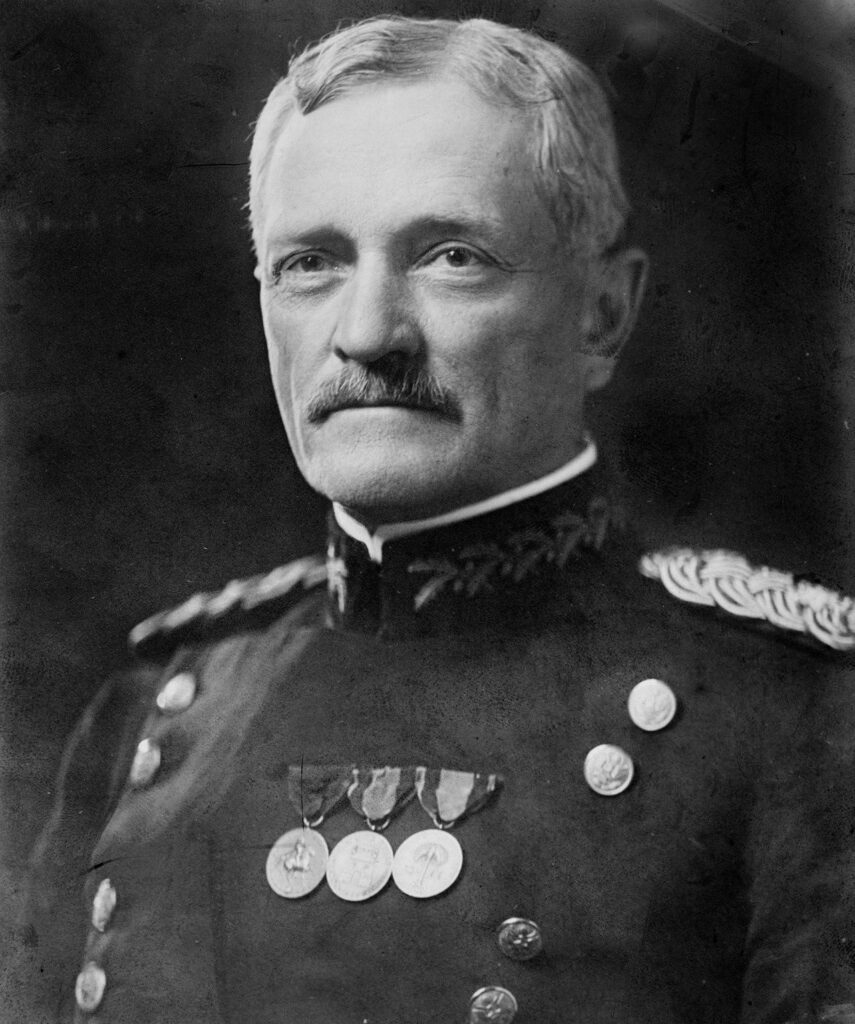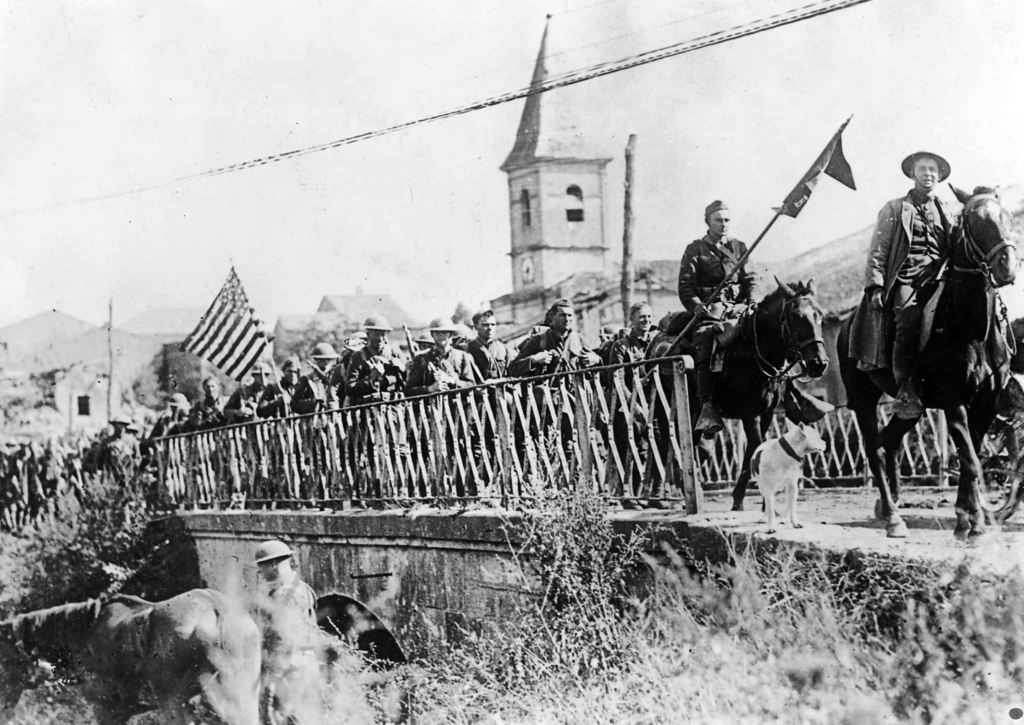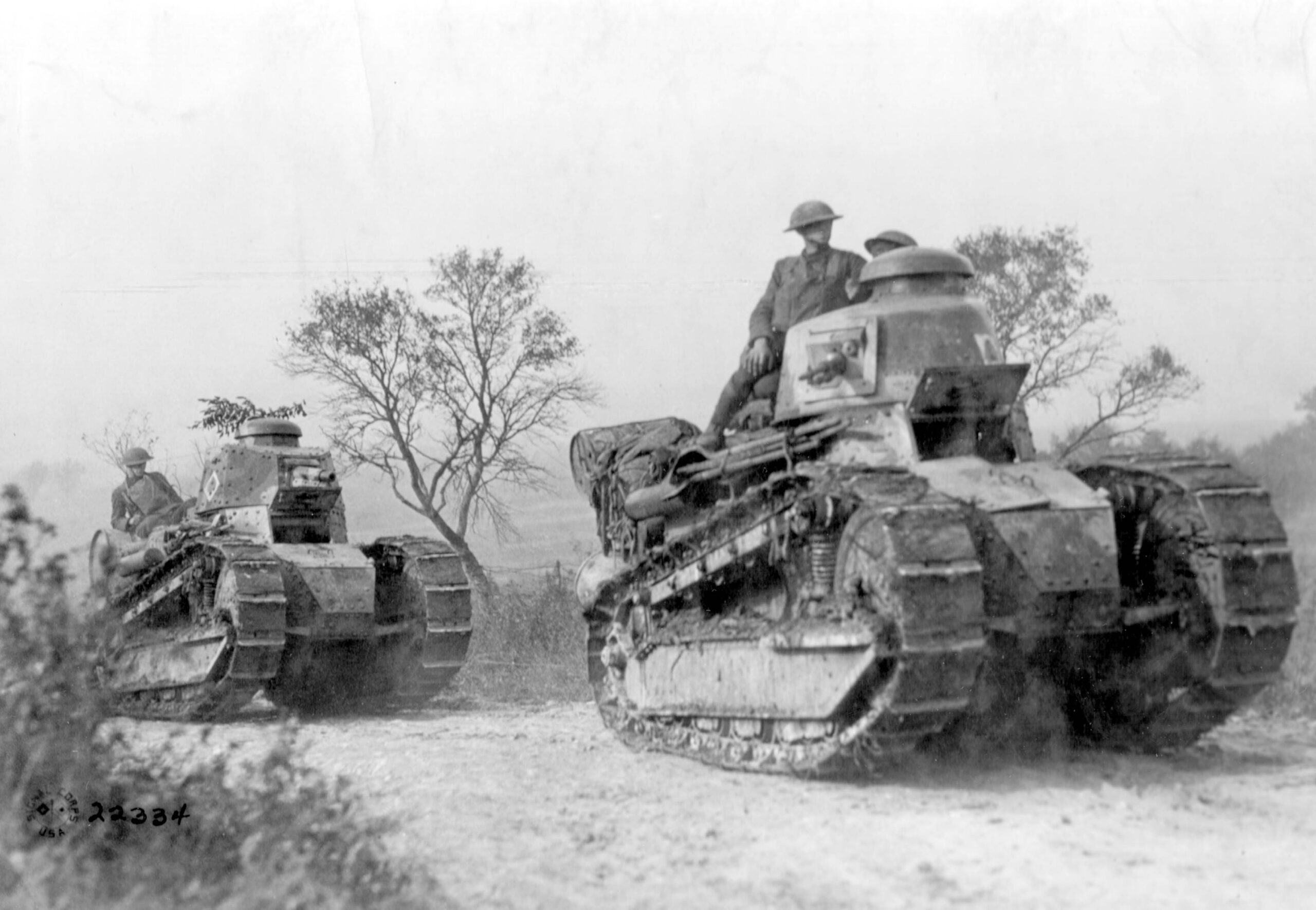The United States entered World War I on April 6, 1917, when it declared war on Germany. The declaration came after a series of provocative acts from the German military and diplomatic corps. U.S. troops arrived in Europe by June 1917 but were largely ill-prepared for the kind of fighting taking place on the western front.
Preparation for the Saint-Mihiel Battle
For months, American soldiers were used to augment French and British forces in Europe. As training improved and the number of veteran U.S. troops increased, Americans reasserted control of their forces. By September 1918, Gen. John J. Pershing had taken command of the American First Army and would lead them into combat at Saint-Mihiel.

Pershing was leading the largest American offensive operation ever assembled for combat in the first time American troops were deployed to defend a foreign country.
The Germans had captured Saint-Mihiel early on in the war, and its position cut a hole in the French Army’s line of communications and railways between Nancy and Verdun. Pershing believed that attacking the Saint-Mihiel salient would not only restore those lines, but it would also be devastating to the German Army and its plans. Moreover, he believed that he could use the town of Metz to push into Germany.
The American Expeditionary Force at Saint-Mihiel comprised 14 divisions of more than 550,000 men, hundreds of tanks, and aircraft with thousands of artillery guns. They were also backed up by four French Divisions of 110,000. It would be the first large-scale attack of World War I, led by the United States.

Facing them were 500,000 entrenched German soldiers. Worst of all, the weather was not favorable to the Americans. Driving winds and heavy rains turned the roads to mud and forced U.S. soldiers to walk in deep mud themselves. Even American tanks had trouble getting to the lines. The German lines were a defense in depth with rows of trenches, barbed wire, tank obstacles, and more, all peppered with machine-gun nests.
Americans did have one thing in their favor: raw talent. The AEF was a virtual who’s who of American military history. On top of being led by Gen. Pershing, the U.S. First Army featured young officers Douglas MacArthur, Billy Mitchell, Hunter Liggett, George Marshall, and two tank battalions led by then-Lt. Col. George S. Patton.
Saint-Mihiel also featured the largest allied air effort of World War I. 1,481 aircraft performed aerial reconnaissance, close-air support, and night bombing missions, along with pursuit fighters from four allied nations.
The Beginning of the Three-Pronged Attack
When the attack was launched on September 12, 1918, it came in a three-pronged attack all along the 25-mile salient. The U.S. force was so large, it moved in corps, and only three divisions were held in reserve. In the middle of the line were French colonial troops intended to keep the Germans busy as three corps of American troops enveloped the salient along its flanks. Then, remaining troops would drive on to capture Metz.

The Americans caught the German Army in the process of a retreat, so its defenses were less organized than expected, and its artillery was out of place. The American I Corps, which attacked the right flank of the salient, reached its first objective by noon the same day. It reached its second objective the next day. By September 13, all the plan’s objectives had been captured.
The pincers movement to the sides of the salient linked up by the next day, IV and V Corps linked up at the French village of Vigneulles. By September 15, the French colonial forces marched into Saint-Mihiel and captured 4,000 German defenders.
The American victory at Saint-Mihiel didn’t just come because the Germans were disorganized at the start of the battle. Gen. Pershing meticulously planned every aspect of the assault and empowered his battlefield commanders to take bold action. Leaders like Patton and MacArthur led their troops from the front lines and took direct control of their movements.

Aftermath of the Battle of Saint-Mihiel
The Americans had done what the allies were unable to do for the previous four years, dislodging the Germans from Saint-Mihiel and relinking the supply lines between Nancy and Verdun. Although they were not able to advance on Metz due to supply problems caused by weather, American forces proved themselves in battle with their European allies – and enemies.
It didn’t come without cost, either. Some 4,500 soldiers were killed in the fighting at the Saint-Mihiel salient, with another 2,500 wounded. It was a harbinger of the fight to come. After the fight for Saint-Mihiel, American troops, now seasoned veterans, were moved all along the front in preparation for an assault that would become known as the Meuse-Argonne Offensive – the deadliest battle in American military history.

Gen. Pershing’s book on WWI is one of the best written informative books I’ve ever read and I read a lot. It’s amazing what he had to do, before he could fight the Germans. When the US entered the war they didn’t have one combat ready airplane in the entire Army. Pershing was a master of organization, was an amazing leader, demanded his officers be fit and able to lead their men from the front, and was probably the best General the United States ever had.